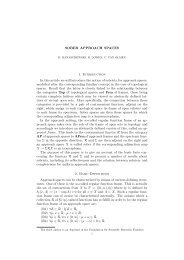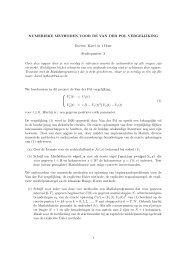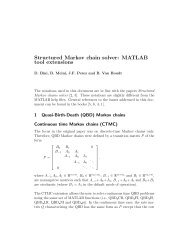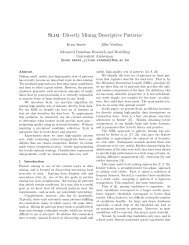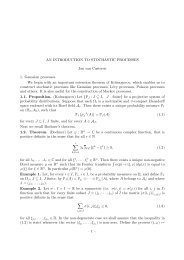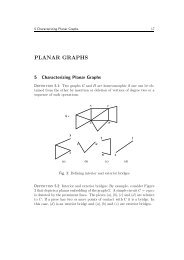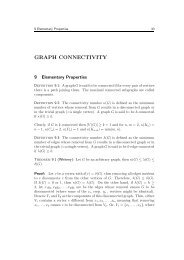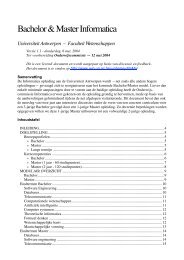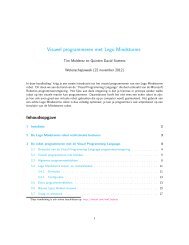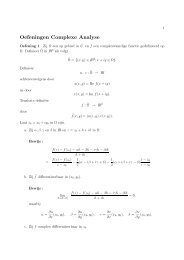Practical Rational Interpolation of Exact and Inexact Data Theory ...
Practical Rational Interpolation of Exact and Inexact Data Theory ...
Practical Rational Interpolation of Exact and Inexact Data Theory ...
You also want an ePaper? Increase the reach of your titles
YUMPU automatically turns print PDFs into web optimized ePapers that Google loves.
10 1. Classical rational interpolation<br />
that solve<br />
fiq(xi) − p(xi) = 0 if f(xi) is finite<br />
q(xi) = 0 if f(xi) is ∞<br />
Now consider the polynomial<br />
<br />
i = 0,... ,ℓ ′ + m ′ + 2δ + s + t.<br />
(p ∗ q − q ∗ p)(x). (1.4)<br />
Either 0 ≤ s + t ≤ ǫ. Then (1.4) has at least ℓ ′ + m ′ + 2δ + s + t + 1 distinct<br />
zeros, but is <strong>of</strong> degree at most<br />
max{s,t} + ℓ ′ + m ′ + 2δ ≤ ℓ ′ + m ′ + 2δ + s + t.<br />
Or ǫ < s + t ≤ 2ǫ. In the latter case (1.4) has at least ℓ + m + 1 =<br />
ℓ ′ + m ′ + 2δ + ǫ + 1 distinct zeros, but is <strong>of</strong> degree at most<br />
max{s,t} + ℓ ′ + m ′ + 2δ ≤ ℓ ′ + m ′ + 2δ + ǫ.<br />
In both cases, (1.4) is a polynomial which must vanish identically. Thus<br />
p(x)/q(x) <strong>and</strong> p ∗ (x)/q ∗ (x) are equivalent.<br />
Figure 1.1: Illustration <strong>of</strong> a block.<br />
Proposition 1.3.1 is illustrated in Figure 1.1. From a sequential application<br />
<strong>of</strong> the Proposition then follows that the block consists <strong>of</strong> a series <strong>of</strong><br />
squares which do not need to be connected, but which are all symmetric<br />
around the diagonal passing through the entry (ℓ ′ ,m ′ ).<br />
As a corollary <strong>of</strong> the pro<strong>of</strong> <strong>of</strong> Proposition 1.3.1, the degree <strong>of</strong> the deficiency<br />
polynomial sℓ,m(x) is directly related to the shape <strong>of</strong> the block [Gut89].



